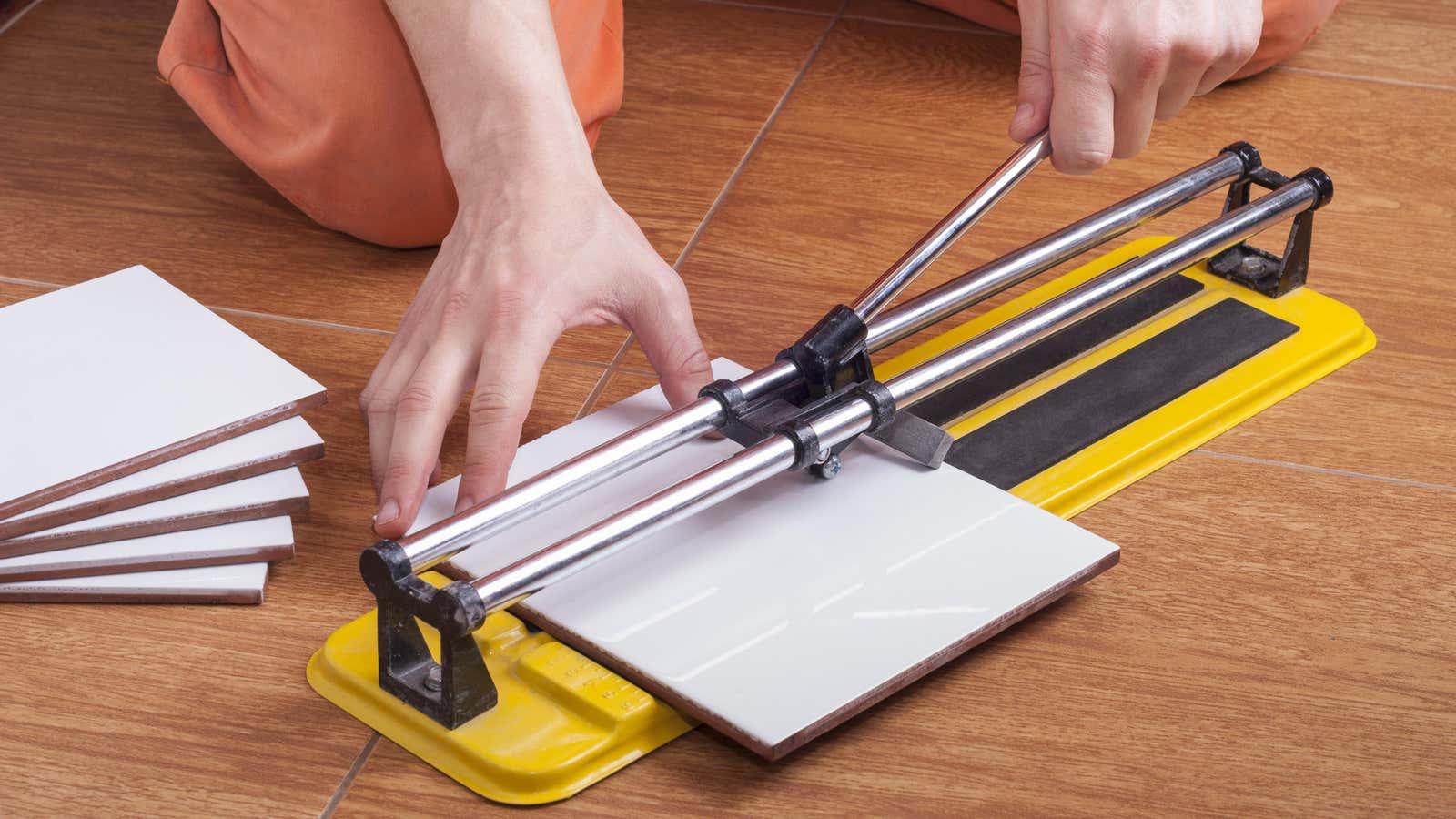How to Cut Tiles Without a Wet Saw

A small tile project like an apron can be DIY if you have the right tools. However, tiling jobs, including a backsplash project, often require the use of a wet saw to cut the tiles accurately (and safely). A wet saw delivers an even stream of water across the blade to create smooth cuts and reduce dust or debris that can occur when cutting at high power. Unfortunately, wet saws can cost anywhere from $ 100 to $ 300, which may seem overwhelming for a beginner. If you’re not ready to take that leap, there are other ways to trim tiles for your project.
Here’s how to complete your next tiling project – without a wet saw.
How to use a manual tile cutter
For larger cuts with a ruler, a hand-held cutter is suitable. Hand-held cutters use notch and pressure to snap the tile into the desired size. The cutter consists of a base to hold the tile, a handle bar on two metal guides that cuts the tile, and a pressure plate that snaps it in two. They are fairly inexpensive, the cost is about $ 25 for the average quality of the cutter. If you are looking to cut thicker china or glass, the best handheld cutter will cost you around $ 125 .
Before you start, you need to first mark where you want to make the cut. Then place the tile on the base of the cutter and align it with the small wheel attached to the handle bar. After you line it up, lower the handle and push forward so the blade runs along the tile marked for cutting. This part of the process is not about cutting through the tile, but cutting deep enough so that it breaks down to size in the next step.
When you are at the end of the tile, press down on the handle to apply pressure (no need to press hard; the metal plate will break easily) and the tile will break along the line you marked. Look at the video YouTube See. Jane Cut, to see a clear example of hand-cut tiles.
After cutting the tiles, you may need a grinding stone to smooth out any irregularities, but they are easy to find and inexpensive . This method is excellent for cutting porcelain stoneware and ceramic tiles in straight lines. Unfortunately, hand cutters cannot cut stone or thick ceramic tiles, nor can they make small or curved cuts.
Glass cutter for laying tiles
The glass cutter uses the same method as the manual cutter, but ironically, you will manually apply pressure to break the tile yourself. First measure and mark the area you want to cut out using a pencil, T-square, or yardstick. Bob Vila recommends tilting the T-square or measure slightly away from the mark so that the cutter can hit the desired point. Then trace the line with the cutter, using a T-square or ruler as a guide to stay straight. Press down to hear the scratching sound of the blade hitting the tile to hammer it in.
After making a cut in the tile, take the other end of the cutter (with a small round ball at the end) and gently tap the underside of the tile along the notch line. This action will further weaken the line to ensure an even break. Then take a wire hanger orglass cutter itself and place it under the tile cutting line; a cutter or hangar will support the tile. Then, you press on both sides of the cut line to cut it in two.
Glass cutter is a cheap option, starting at just under five dollars , but like a hand cutter, this method only works for straight cuts and medium-thickness porcelain or glass tiles. If you want to make angled cuts or small cuts for corners, you can use a tile cutter and a grinding stone.
However, no matter what you use, always wear safety glasses – tile debris can be dangerous, especially when using a hand or glass cutter.